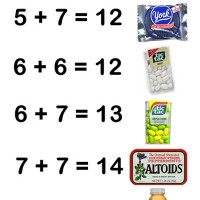Knight: Did you smell that kaleidoscope?
- Details
- Published on Thursday, 12 September 2013 17:58
- Written by Bill Knight
I can imagine the response if I write that, as a kid, I sleepwalked and had an imaginary friend.
"No surprise," a Tea Partier may sniff. "Progressives are sleepwalking through the 21st century, and union guys are surrounded by imaginary friends."
But if I mention that I used to explain to my Kindergarten teacher that days of the week were certain colors, the reaction might be more like, "Step away from the ledge, sir."
My sleepwalking lasted a couple of years, when I'd usually walk downstairs and sort of speak in tongues to my parents, who'd patiently explain that they couldn't understand what I was babbling about and then gently accompany me back to bed. The following mornings I'd have vague, dream-like memories of these frustrating interactions.
My imaginary friend faded before I started school, but I feel a little guilty even now just dismissing him (his name was Dewey) because my feelings about him – not exactly "memories" – are vivid, if not precisely describable in a physical sense.
However, I can describe days' colors, even now:
Monday is green, Tuesday blue, Wednesday yellow, Thursday purple, Friday brown, Saturday white and Sunday red.
That's that.
Weird? Maybe.
But ... maybe not.
It turns out that some people experience the world in a kind of "sensory stereo," with numbers or letters perceived as colors, musical notes a certain smell or taste, and maybe a poem or paragraph a soothing or jangled tone or chord.
It's called "synesthesia," an unusual neurological syndrome.
"Most synesthetes believe that [artist] Charles Burchfield was synesthetic," said Nancy Weekly, a leading scholar on the watercolorist who shared her theory this summer at the annual conference of the American Synesthesia Association in Toronto.
"Synesthesia is a neurological condition in which stimulation in one sensory or cognitive pathway leads to automatic, involuntary experience in a second sensory or cognitive pathway," she explained.
Therefore, a trigger – a day of the week, for instance – provokes not only the understanding of a day, but a color. Maybe a sharp pain sparks a bitter taste.
Daniel Tammet, a high-achieving autistic savant, wrote about that in his compelling book, "Born on a Blue Day."
Synesthesia can take different forms, too. "Grapheme-color synesthesia" is believed to be the most common, where affected folks perceive numbers and letters as colors: a five may be blue, two green, etc. In fact, composer Oliver Messiaen – who wrote "Le Merle Noir" and whose synesthesia is well-documented – perceived sounds as color, and wrote music that sought to depict the colors he perceived.
"For Burchfield, his journals suggest he 'saw' sounds and smells, and his paintings depict the sounds and smells of the natural world he explored," said Weekly, a professor at SUNY Buffalo State and author of "Charles E. Burchfield: The Sacred Woods."
"He also depicted emotions as shapes, which he called 'conventions for abstract thoughts'," she added.
For Burchfield, certain shapes depicted brooding, loneliness, and morbidness, among others. His art is often described as fantastical, but it may simply show reality as he perceived it.
People with synesthesia – about 4 percent of the population, according to the association – can experience dual perceptions in response to a single stimulus, according to studies using MRIs and other technologies.
Blending the senses may be as reasonable as mixing computers and illustrations, Weekly said after the conference.
"One theme that emerged is that art and science are not diametrically opposed," she said. "Synesthesia is on the cusp of exploring what may, in fact, be a deep connection between the two."
That makes perfect sense to me.
I'd really like to ask Dewey.
However, sad to say, I lost that connection.


















































